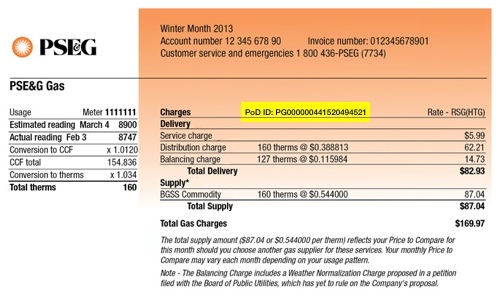What are the most important parts of my PSEG electricity bill?
Understanding your PSE&G Bill is the first step in taking control of your energy expenses and getting a better PSE&G Electricity Rate. You might be unsure about what you're being charged for and what you are expected to pay. Fortunately, it's not usually too hard to decode your PSG&E bill.
1. Service Charge: A fixed monthly charge that includes the cost to maintain an account for a customer, including metering and billing.
2. Distribution Charge: The charge for delivering electricity to a customer’s home, including the cost of government-mandated programs designed to achieve public policy goals, such as energy conservation. Refer to the Tariff for Electric Service for more details.
3. Supply Charge: The charge for generation, including the cost of the transmission from generation facilities to the local distribution system. Refer to PSE&G’s website for current charge.
4. Price to Compare (PTC): A customer may choose to receive electric supply from PSE&G or a third party supplier. A customer who receives electric supply from a third party supplier will not have to pay the Basic Generation Service Charges (BGS) to PSE&G.
The PTC per kWh for PSE&G’s BGS Charges for residential customers, by rate schedule, is indicated in the bill illustration above.
The current PTC is available on PSE&G’s website. PSE&G will continue to deliver electricity to its customers and is the company that customers call if they have problems with their service.

What are "Electric Charges" on my bill?
You will see a few different charges on your electricity bill. Your are based on a kilowatt-hour (kWh), which is the unit used to measure your energy use. Items on your bill include a service charge, which you pay for the maintenance of your PSEG account, such as metering and billing. This is a fixed amount that you pay each month. There is also a distribution charge and a supply charge. These pay for the delivery and generation of the electricity you use.
If you choose to get your energy from PSE&G, you will pay Basic Generation Service Charges. However, your other option is to compare PSEG electricity rates